- Home
- About Us
- VOCs
- Molecular Tech
- Product & Service
- Contact
- GO BACK
- Contact
- Announcements
- Press
Li+@C60 Lithium endohedral fullerene
Ph.D. Eunsang KWON,
Ph. D. Yasuhiko KASAMA
Ultra-precise cancer diagnosis technology using the energy level,
utilizing properties of Li+@C60(Lithium Endohedral Fullerene)
Molecule Diagnosis System
Next-Generation Healthcare Platform using
Molecular Physical Chemistry
CDBIO possesses patents on four key patents, including a molecular sensor and a lung cancer sensor, using the properties of 'lithium endohedral fullerene (Li+@C60).
Diagnosis Time, Accuracy, Diagnosis Cost

The core technology of CDBIO's molecular-medical/healthcare platform is based on molecular sensor technology using lithium endohedral fullerene.
Lithium Endohedral fullerene (Li+@C60) is an emerging carbon nanomaterial, the most important type of endohedral metallofullerene, and is commercialized for the first time through a joint study by Ph D. Eun-Sang Kwon, a professor at the Research and Analytical Center for Giant Molecules at Tohoku Univ., Japan, and Ph. D. Yasuhiko Kasama, a colleague at Tohoku University and CEO of Idea International.
Lithium endohedral fullerene is the lowest energy level material ever developed or discovered. The energy level refers to the energy value of quantized states in which electrons in the quantum mechanical system, such as atoms, molecules, or solid matters, can be formed. Also, it is a state-of-the-art diagnostic sensor that combines molecular physics and electrochemistry to diagnose volatile organic compounds (VOCs) caused by disease in the human body with extreme precision on a molecular basis, using the electrical properties of lithium endohedral fullerene.


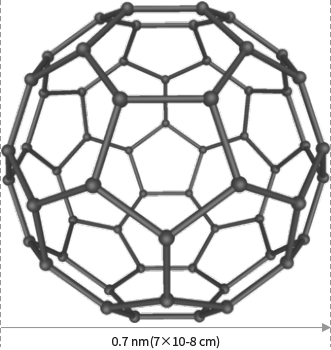
Carbon allotropes discovered in 1985 by Nobel Laureates Harold Kroto, Richard Smalley, and Robert Curl, who ushered in the era of nanoscience.
A hollow, soccer-ball-shaped carbon molecule with 20 hexagons and 12 pentagons formed by a combination of sixty carbon atoms with a diameter of about 0.7 nm. Highly stable construction to withstand extremely high temperatures and pressures.
The strength of C60 fullerene is that it can make numerous derivatives through chemical reactions or induce changes in physicochemical properties by modifying the surface or inserting other molecules into the space inside fullerene.
Based on these properties, it is used as electrolyte membranes for fuel cell applications using a fullerene compound to which oxygen and hydrogen atoms are attached as a conductor; various optoelectronic functions and radioisotope carriers, storage batteries through interactions with light due to the electromagnetic field spread throughout the molecular skeleton (e.g., light absorption, luminescence, photoconductivity, and photoelectric force effect); drug delivery (carrier) that stores and transports drug ingredients inside fullerene.

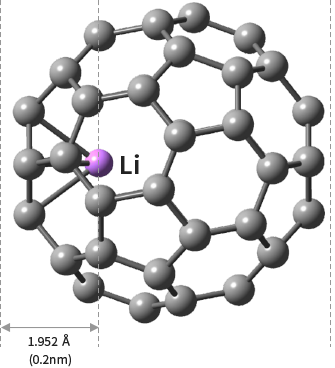
Lithium endohedral fullerene (Li+@C60) is a new nanomaterial containing lithium ions inside C60 fullerene in a vacuum state (new material registered in 2006)
Successful commercialization for the first time in the world through joint research between Ph D. Eunsang KWON , CTO of CDBIO and currently a professor at the Center for Macromolecular Analysis, Graduate School of Science, Tohoku University, Japan, and Dr. Yasuhiko KASAMA, a colleague at Tohoku University and CEO of Idea International.
Lithium Endohedral fullerene has a very interesting structure where internal cations having positive charges and external anions having negative charges are separated by the carbon frame between them, from its structure, very high electronic affinity and ion conductivity are mainly inherited. In addition, it offers very high dye sensitization and a stable and long duration of charge separation.
CDBIO Co., Ltd. develops a molecular diagnostic system capable of ultra-precise diagnosis of the concentration difference of VOCs contained in respiration above the ppt level by utilizing the electrochemical properties of lithium endohedral fullerene.

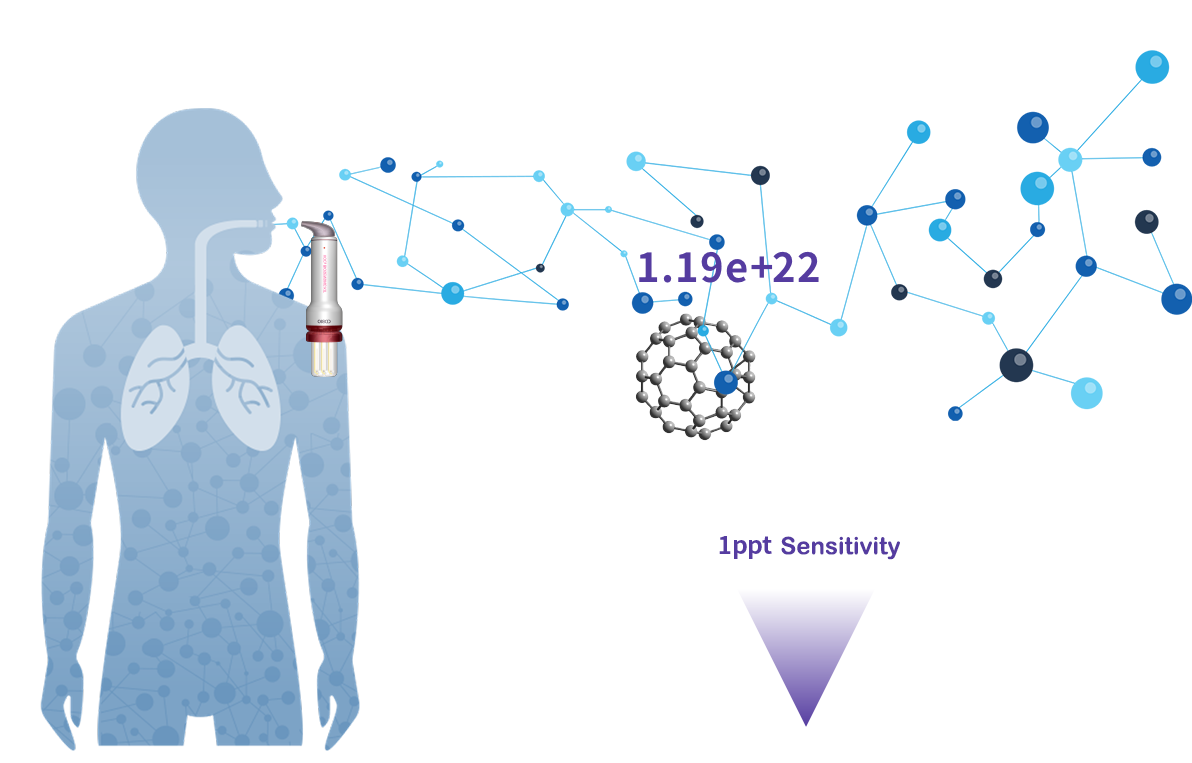
Molecules equivalent to 1 ppt of all molecules contained in an exhalation of 500 cc at a time 1.19×1022×10-12≒1.19×1010
The amount of charge released by one-electron oxidation 1.6×10-19C×1.19×1010≒1.9×10-9C
The change in this charge amount is detected as 1.9nA, of which 1% is ionized and detected as 19pA
Development of a high-precision measuring sensor that can measure pA (ppt precision) with a molecular sensor using electrochemistry
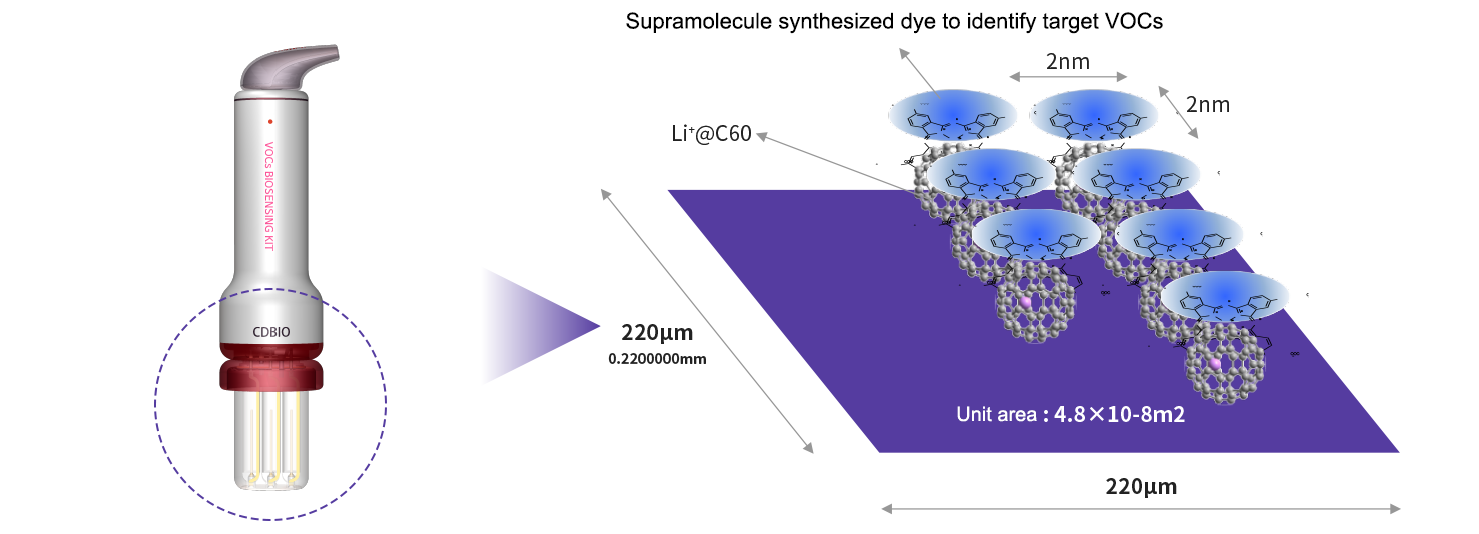
We used an electrolyte water solution that is not harmful to our bodies while it violently reacts to the target VOCs contained in 500cc exhalation, in order to develop this supramolecules compound and synthesized it with Lithium Endohedral fullerene to develop supramolecules sensors consisting of a single carbon nano tube.
In this supramolecules sensor, there exist various conduction layers where the energy potential for the target VOCs with a high possibility for potential bio markers we want to detect is set ahead of times, and by combining it with high chemical reactivity of Lithium Endohedral fullerene, it is possible to maximize the sensitivity of sensor.
Ultra-precise detection is attained by forming a molecular sensor with a size of 2 nanometers at high density in a narrow space of 220 microns in width x height (0.2200000mm). (About 1.2×1016 (12,000,000,000,000,000) supramolecules synthesized dye and lithium endohedral fullerene (Li+@C60) are loaded in the entire 4mm space of the molecular sensor unit.)
It is the world's first molecular sensor that uses the principle of electrochemistry and measures using the potential scan method, etc., enabling ultra-precise analysis more than ppt beyond the existing detection limit.

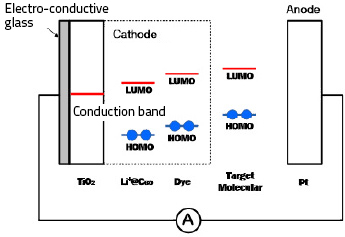
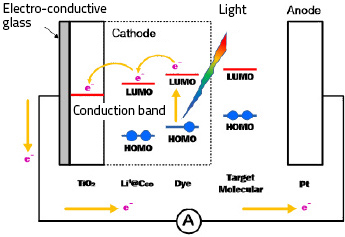
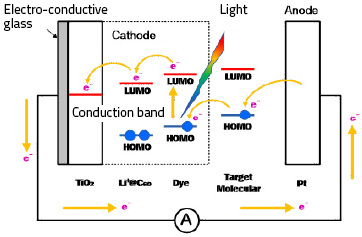
In the initial state, energy levels such as potential VOC biomarker substances (target VOC molecules), Dye, and Li+@C60 are set so that electrons do not move from the anode to the cathode.
When light energy is irradiated to the dye, the electrons in the HOMO (highest occupied molecular orbital) of the dye are excited to the LUMO (lowest unoccupied molecular orbital), and the electrons excited to the LUMO of the dye move through the LUMO of Li+@C60 to the TiO2 cathode. Meanwhile, electrons present in the HOMO of the potential VOC biomarker substance move to the holes generated in the HOMO of the dye, and electrons are supplied from the Pt anode to the generated holes to form a closed current circuit.
Here, the difference in concentration of potential VOC biomarker substances is detected by measuring the flowing current. In principle, due to its extremely high precision capability as one electron flows for one molecule of potential VOC biomarker substance, it is an advanced diagnostic technology that can create customized prescriptions and treatment methods for patients by enabling early diagnosis of diseases (e.g., lung cancer) and monitoring the sensitivity and sensitivity of potential VOC biomarker substances according to the dosing effect depending on the configuration of the system.

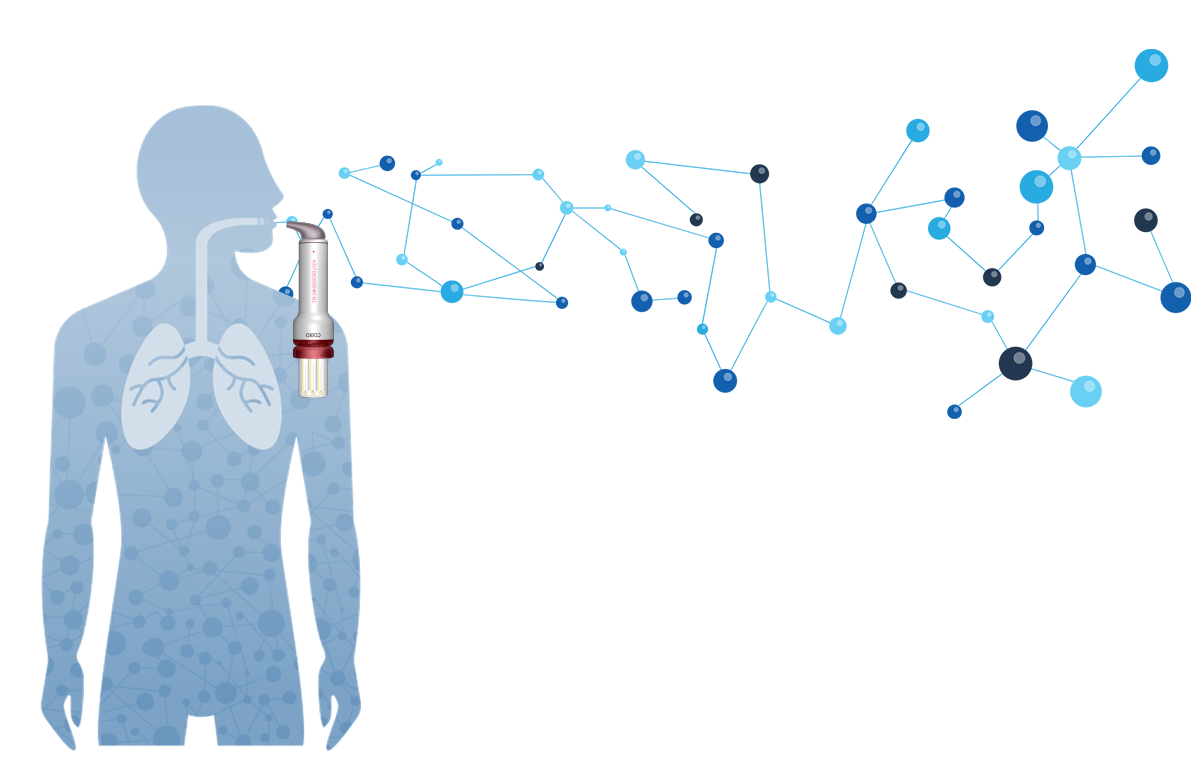
Ultra-precise diagnosis of potential VOC biomarker substances contained in respiration with the world's first molecular sensor to which electrochemical principles are applied.
Monitoring the presence of disease, progression status, development of therapeutic agents, and administration effects through our analysis algorithm applied with ‘principal component analysis’ and ‘multivariate analysis’ based on the current value measured by the molecular sensor loaded with lithium endohedral fullerene (Li+@C60) and supramolecular dye.
The most accurate and precise diagnostic system developed to date, including liquid biopsy
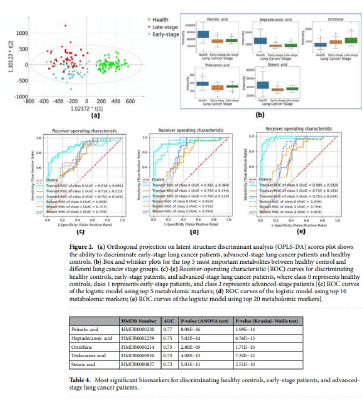 < From the high-resolution metabolic papers published in Nature in 2021 >
< From the high-resolution metabolic papers published in Nature in 2021 >

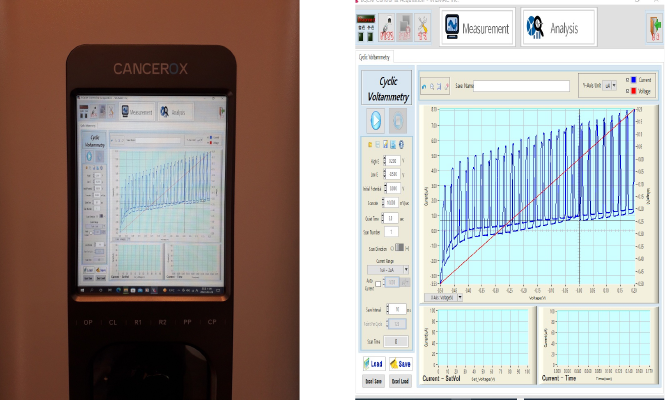 < Example of live data extraction detected by CDBIO's first prototype system in 2019 >
< Example of live data extraction detected by CDBIO's first prototype system in 2019 >
Completion of live data detection and analysis through the first prototype equipment developed in 2019
Detection of potential VOC biomarker substances discussed in foreign papers
Currently, developing a new model product with a molecular sensor capable of detecting three potential VOC biomarker substances.
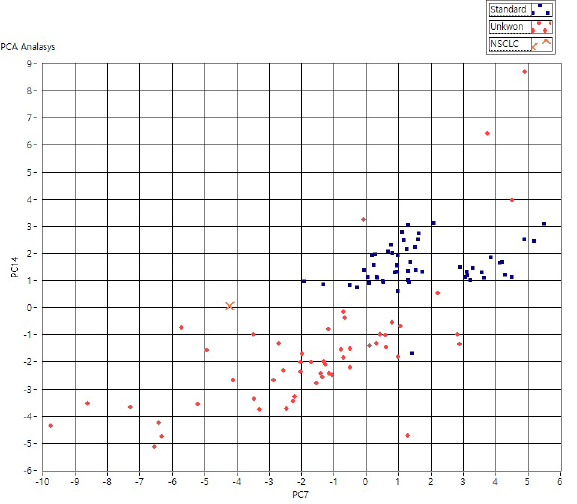
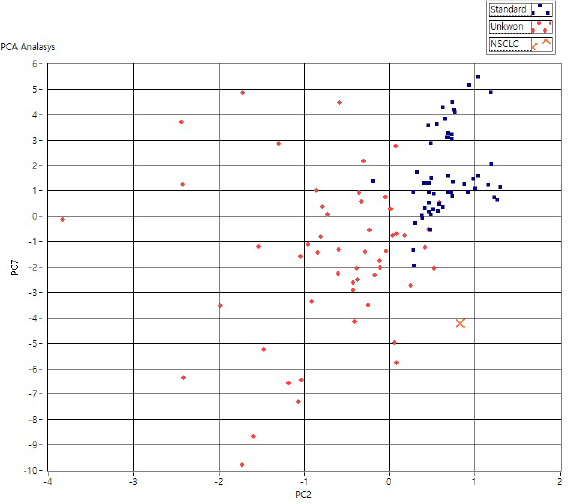
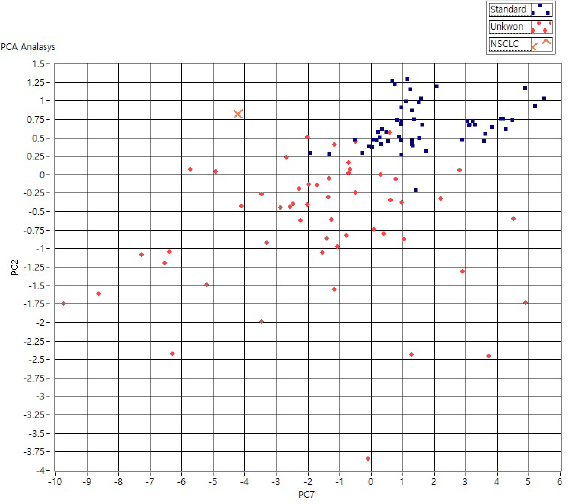
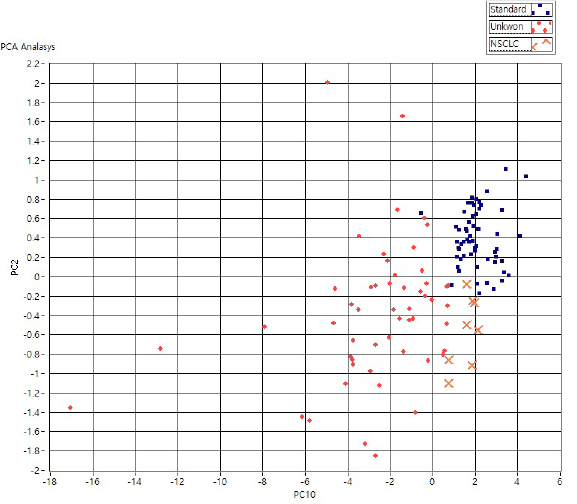
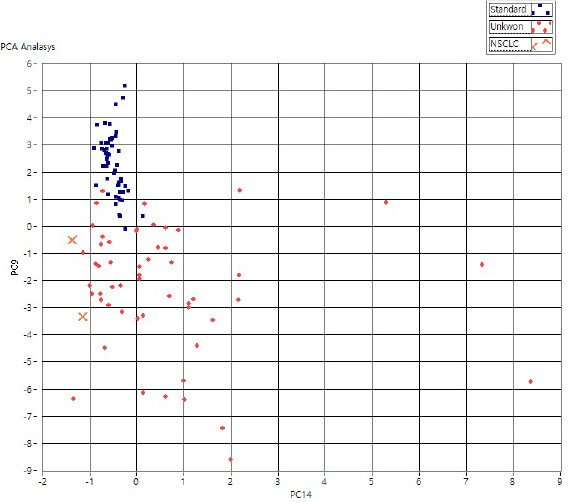
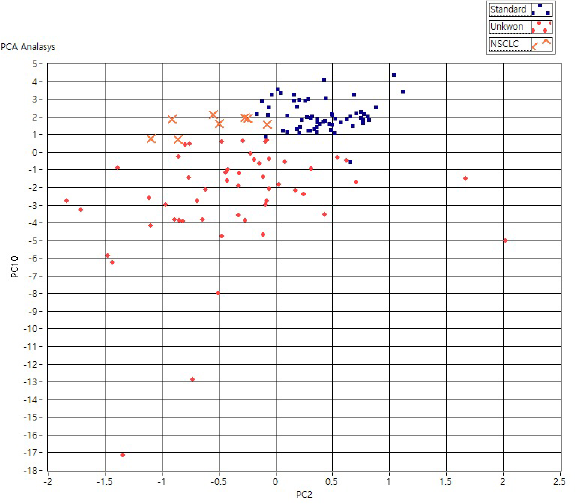
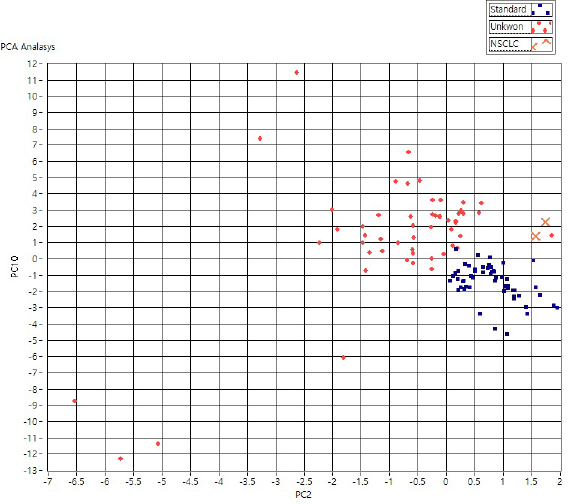
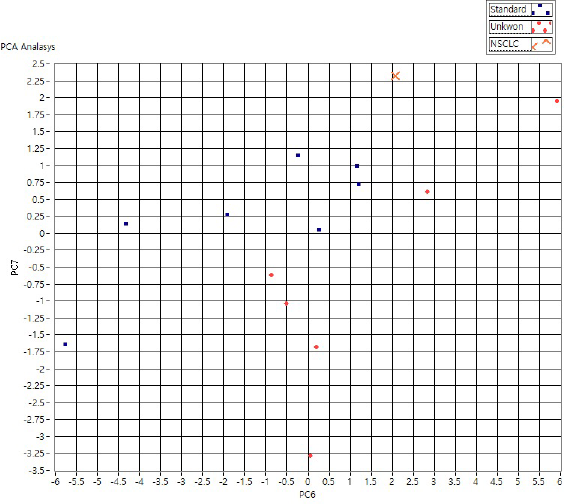
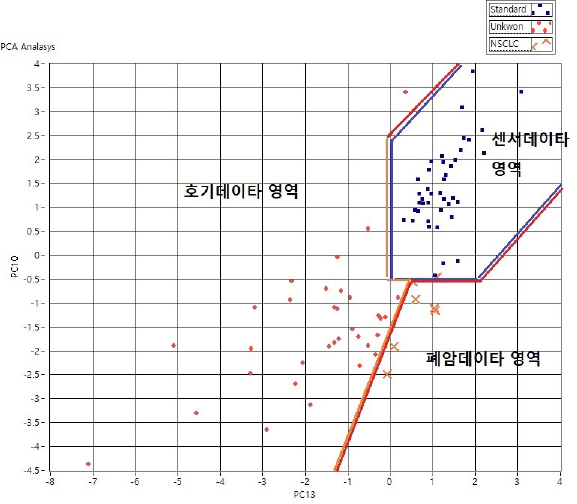
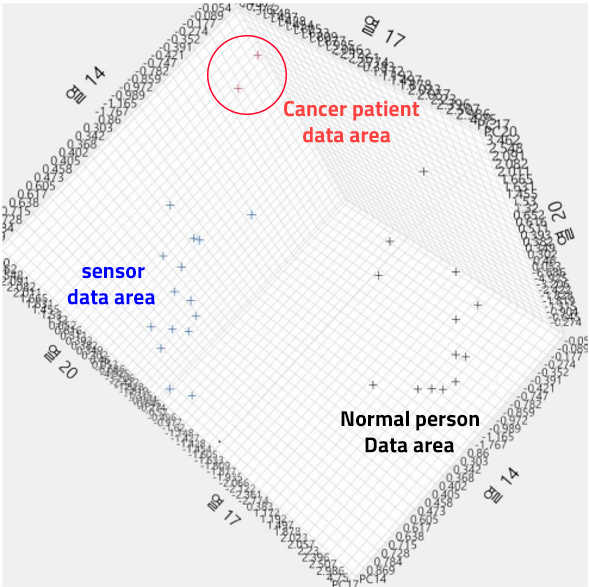


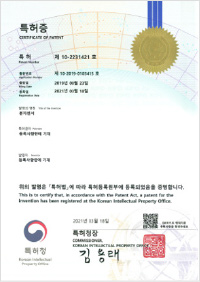 < Molecular sensor >
< Molecular sensor >
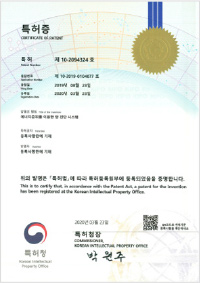 < Lung cancer sensor using exhalation >
< Lung cancer sensor using exhalation >
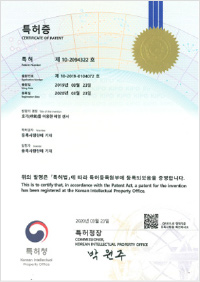 < Cancer diagnosis system using energy levels >
< Cancer diagnosis system using energy levels >
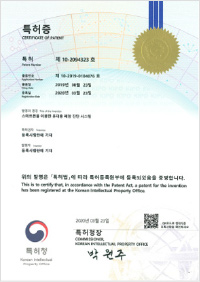 < Portable lung cancer diagnosis system >
< Portable lung cancer diagnosis system >
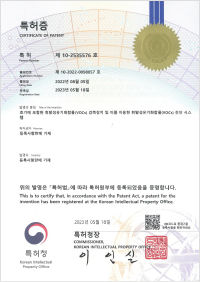 < A volatile organic compound (VOCs) detection device contained in exhaled air and a volatile organic compound (VOCs) diagnostic system using the same >
< A volatile organic compound (VOCs) detection device contained in exhaled air and a volatile organic compound (VOCs) diagnostic system using the same >
| Patent application number | Patent name | Patent details |
|---|---|---|
| 10-2019-0104071 | Cancer Sensors Using Energy Levels | A sensor designed to use the energy level of the redox potential to let electrons move by mediating electrons donated by cancer substance (or a substance caused by cancer). |
| 10-2019-0104073 | Portable cancer diagnosis device using energy level | A device that accurately diagnose with a precision higher than the PPT level, using the energy level of redox potentials such as Li+@C60, dyes and electrodes. Applicable to all types of cancer. |
| 10-2019-0104074 | Portable cancer diagnosis system using smartphone | A portable cancer diagnosis system that detects cancer using a smartphone. |
| 10-2019-0104075 | Portable lung cancer diagnosis device using exhalation | A sensor that detects the development and progression of lung cancer by detecting lung cancer substances contained in raw breath. |
| 10-2019-0104078 | Cancer diagnosis system using big data and artificial intelligence | A system that provides information on cancer development, type, and progression by analyzing cancer screening data using artificial intelligence. |
| 10-2018-0117028 | Exhalation trapping device for cancer diagnosis | Exhalation trapping device that collects cancer substances contained in exhaled air to diagnose cancer occurrence |
| Patent application number | Patent name |
|---|---|
| Patent details | |
| 10-2019-0104071 | Cancer Sensors Using Energy Levels |
| A sensor designed to use the energy level of the redox potential to let electrons move by mediating electrons donated by cancer substance (or a substance caused by cancer). | |
| 10-2019-0104073 | Portable cancer diagnosis device using energy level |
| A device that accurately diagnose with a precision higher than the PPT level, using the energy level of redox potentials such as Li+@C60, dyes and electrodes. Applicable to all types of cancer. | |
| 10-2019-0104074 | Portable cancer diagnosis system using smartphone |
| A portable cancer diagnosis system that detects cancer using a smartphone. | |
| 10-2019-0104075 | Portable lung cancer diagnosis device using exhalation |
| A sensor that detects the development and progression of lung cancer by detecting lung cancer substances contained in raw breath. | |
| 10-2019-0104078 | Cancer diagnosis system using big data and artificial intelligence |
| A system that provides information on cancer development, type, and progression by analyzing cancer screening data using artificial intelligence. | |
| 10-2018-0117028 | Exhalation trapping device for cancer diagnosis |
| Exhalation trapping device that collects cancer substances contained in exhaled air to diagnose cancer occurrence |

Diagnosing VOCs by respiratory analysis companies and research institutes overseas is complex and takes a considerable amount of time. However, CDBIO provides diagnostic results within ten minutes at the test site.

Currently, the global medical community is developing methods by applying various diagnosis technologies to analyze volatile organic substances from breathing.
For example, Company O, a specialist in respiratory analysis in the UK, can only measure up to ppb level. Also, even with various technologies such as semiconductor sensors and bio chips, accuracy higher than the ppb level is not achievable until now.
However, in the case of a supramolecular sensor using lithium endohedral fullerene, it is
| Company / Institution | Diagnostic Tech | Accuracy |
|---|---|---|
| NIMS | Cantilever | ppm(1/106) ~ ppb(1/109) |
| AIST (National Institute of Advanced Industrial Science and Technology, Japan) |
Semiconductor Sensor | ppb |
| Panasonic | Bio Chip | Used after concentrating ten million times |
| Owlstone Medical | GC-MS analysis | ppb |
| CDBIO | Li+@C60 Molecular Sensing | Accuracy of ppt (1/1012) level (Detectable with 100cc ~ 300cc exhalation) |
| Company / Institution | Diagnostic Tech |
|---|---|
| Accuracy | |
| NIMS | Cantilever |
| ppm(1/106) ~ ppb(1/109) | |
| AIST (National Institute of Advanced Industrial Science and Technology, Japan) |
Semiconductor Sensor |
| ppb | |
| Panasonic | Bio Chip |
| Used after concentrating ten million times | |
| Owlstone Medical | GC-MS analysis |
| ppb | |
| CDBIO | Li+@C60 Molecular Sensing |
| Accuracy of ppt (1/1012) level (Detectable with 100cc ~ 300cc exhalation) |
Comparing the diagnosis cost with competitors in the existing cancer diagnosis market using 'Liquid Biopsy' technology, which has attracted the most attention in the global cancer precision medicine industry since the announcement by MIT as 'Innovative New Technology of the Year' in 2015, it is 40 to 58 times cheaper than traditional tests, over ten times cheaper than the most popular Grail’s product, and more than eight times cheaper than traditional PCR molecular diagnostics.
| Company | Product | Tech | Detail | Cost |
|---|---|---|---|---|
| Biocept | Target Selector | Sequencing /FISH |
Identifying 13 genetic mutations by using ctDNA and CTC | N/A |
| Grail | N/A | Sequencing (Deep seq) |
Illumina-based diagnostic technology under development | $1,000 |
| Guardant | Guardant360 | Sequencing (Deep seq) |
Identifying 70 gene mutations | $5,800 |
| Oncocyte | Oncocyte DX test | Sequencing | Diagnosing lung, breast and bladder cancer | $4,000 |
| Genomic Health | Ocotype SEQ | Sequencing | Identifying 17 gene mutations | N/A |
| CDBIO | CANCERBOX | Li+@C60 Molecular Sensing |
Measuring the energy level of cancer substances by using the characteristics of Li+@C60 (lithium endohedral fullerene) | Less than $100 |
| Myriad | myRisk | Sequencing | 28 Cancer Genes Panel | $4,500 |
| Foundation Medicine | FoundationACT™ | Sequencing (Deep seq) |
Executing deep seq by using ctDNA(61 genes in total) | $5,800 |
| Qiagen | REPLI-g Single Cell Kit |
PCR | Developing isolation kits such as ctDNA, MIRNA, and RNA | $800 |
| Trovagene | Trover Test | Sequencing | Monitoring cancer gene mutations by using urine (EGRF, KRAS, BRA) | N/A |
| Company | Product | Tech | Cost |
|---|---|---|---|
| Detail | |||
| Biocept | Target Selector | Sequencing / FISH |
N/A |
| Identifying 13 genetic mutations by using ctDNA and CTC | |||
| Grail | N/A | Sequencing (Deep seq) |
$1,000 |
| Illumina-based diagnostic technology under development | |||
| Guardant | Guardant360 | Sequencing (Deep seq) |
$5,800 |
| Identifying 70 gene mutations | |||
| Oncocyte | Oncocyte DX test | Sequencing | $4,000 |
| Diagnosing lung, breast and bladder cancer | |||
| Genomic Health | Ocotype SEQ | Sequencing | N/A |
| Identifying 17 gene mutations | |||
| CDBIO | CANCERBOX | Li+@C60 Molecular Sensing |
Less than $100 |
| Measuring the energy level of cancer substances by using the characteristics of Li+@C60 (lithium endohedral fullerene) | |||
| Myriad | myRisk | Sequencing | $4,500 |
| 28 Cancer Genes Panel | |||
| Foundation Medicine | FoundationACT™ | Sequencing (Deep seq) |
$5,800 |
| Executing deep seq by using ctDNA(61 genes in total) | |||
| Qiagen | REPLI-g Single Cell Kit |
PCR | $800 |
| Developing isolation kits such as ctDNA, MIRNA, and RNA | |||
| Trovagene | Trover Test | Sequencing | N/A |
| Monitoring cancer gene mutations by using urine (EGRF, KRAS, BRA) | |||